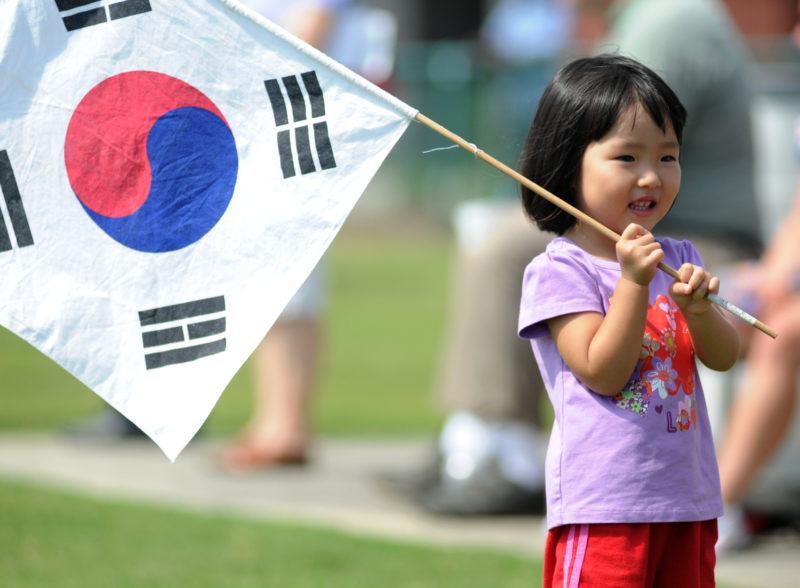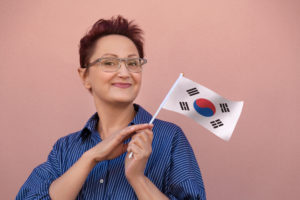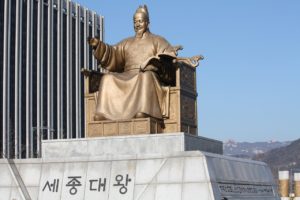13 Vitally Important Korean Holidays
Korea boasts of rich culture and numerous holidays. These days reflect on family unity and patriotism. Now, if you’re looking to learn a new language, then you need to take a quick break from your daily language lessons and spend some time learning about Korean Culture. After all, learning a new language is about more than reviewing words and phrases, it’s about understanding a new culture. So, get your gift wrap ready and put your holiday hunger on standby as you learn more about these 13 vitally important Korean holidays.
1. New Year’s Day (새해 – Saehae)
New Year’s Day is a big deal around the world, and South Korea is no exception. Although the festivities only last for the day, people still have a great time. You can expect to see very similar types of celebrations that you would see in other countries: mostly people enjoying the day off at the start of the year.
2. The Lunar New Year (설날 – Seollal)
The Lunar New Year is huge in Korea. There’s food, dance, and rituals to celebrate the beginning of the new year. And people travel far and wide for this incredibly special occasion with their families. This is the time of year for huge family gatherings. From your intermediate family to your distant relatives, everyone joins in on the Lunar New Year.
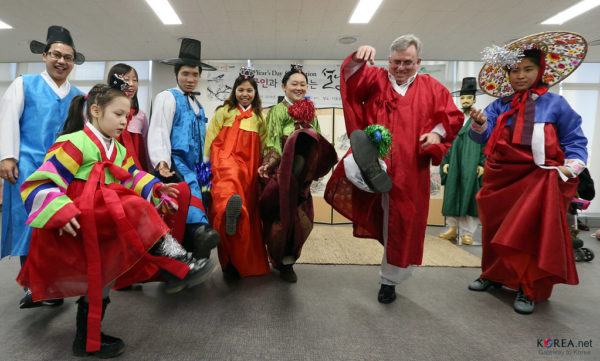
What Are Charye and Eumbok?
Traditionally, the Lunar New Year celebrations take place at the house of the eldest male relative in the family. This holiday consists mostly of worshipping ancestors and paying respect to the elderly members of society.
Charye (차례, ancestor worship), takes place in a very elaborate manner. Usually, female family members prepare an amazing meal. They serve food to their ancestors as well as their living relatives. Some of the common foods prepared for this occasion include meat, rice, soups, seafood, and, of course, alcohol.
Although female family members make food, the duty of sharing and serving it falls on the male members of the family. Customs also dictate how to serve the food to the ancestors. This part of the ritual is known as Eumbok (음복, drinks blessing). During Eumbok the family asks their ancestors for blessings in the new year.
Respect Toward Elders
During the Lunar New Year, respect towards elders is a vital part of the celebrations. To show their profound respect to the elder members of the family, children usually perform a sebae (세배, new year bow), a type of bow to elders, in the morning. The elders, in turn, give the children gifts and money.
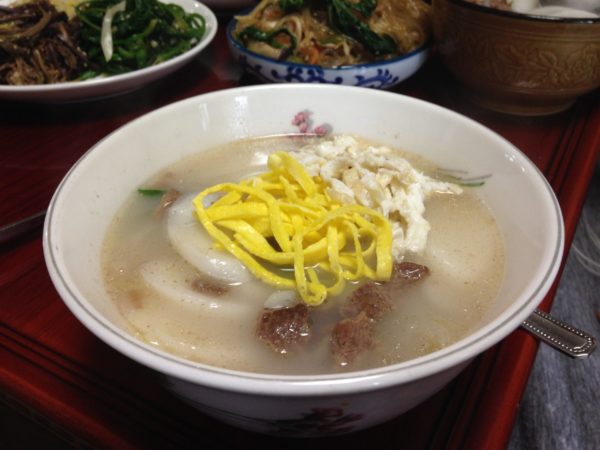
Afterward, the family gets together to eat tteokguk (떡국, rice cake soup) for breakfast. Eating tteokguk on the Lunar New Year is very symbolic in Korean culture, signifying a fresh start of the new year and the prospect of prosperity. Eating a bowl of tteokguk on this day also symbolizes that a person has become one year older and wiser.
3. Independence Day (3·1절 – Samiljeol)
Many countries mark the day they attained independence with great honor and reverence. In South Korea, this day falls on 1st March. And it represents a crucial moment in history when Korea gained independence from Japanese rule.
In 1919, a group of 33 nationalists declared the country’s independence from Japanese rule. This sparked nationwide demonstrations, which ultimately led to the formation of the Provisional Government of the Republic of Korea. This started a domino effect across Asia. Independence movements rose and succeeded in India and China. Even to this day, Koreans are still very proud of their role in helping independence spread.
To commemorate this incredibly significant day, people usually hang flags in their homes and visit places of historical importance. Additionally, artists put up performances related to independence to celebrate the day.
4. Children’s Day (어린이날 – Eorininal)
Children’s day is one of the sweetest Korean holidays. People gather to celebrate the nation’s children and to show their pride and love for their young ones on May 5th every year. Children receive gifts and have plenty of activities to do with their parents.
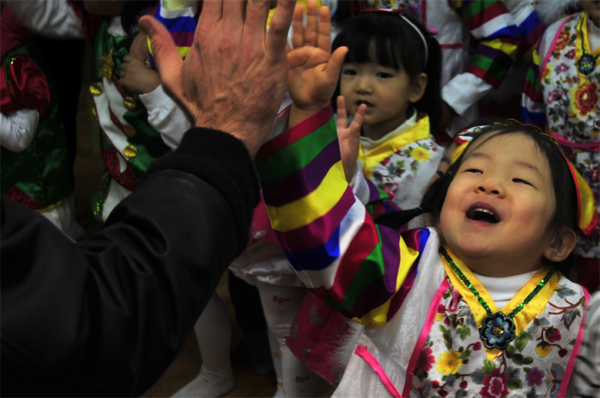
Since 1975, Children’s Day is a public holiday in Korea. Parents can spend the entire day going to the parade, amusement park, zoo, or to movies with their kids.
5. Parent’s Day (어버이날 – Eobeoinal)
Although this isn’t a public holiday, Parent’s Day is still important in Korea. It takes place on May 8th, only three days after Children’s Day. On this day, people honor parents for their dedication and devotion to raising their children.
6. Buddha’s Birthday (부처님 오신 날 – Bucheonnim Osinnal)
Buddha’s Birthday is a Korean public holiday marked on the 8th Day of the 4th Lunar month. The holiday celebrates the birth of the founder of Buddhism, Gautama Buddha. Since a fifth of Korea’s population identifies as Buddhist, this day is a major Korean holiday. The excitement that accompanies the onset of this holiday is usually uncontainable. People begin preparing for a week of festivities up to a month before the day arrives.
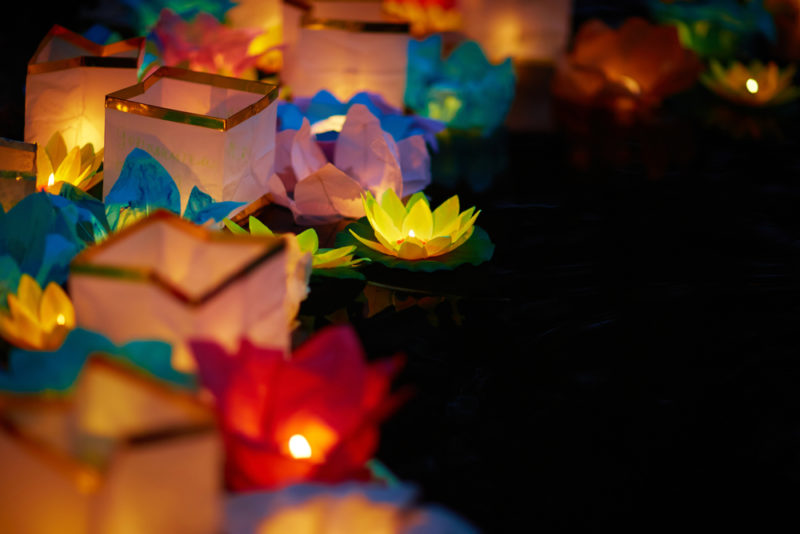
A trademark of the holiday is lotus lanterns, which show the founder’s wisdom. It is, therefore, quite common to find whole towns decorated in colorful lights during the holiday. Buddhist Temples are a sight to behold during this time. They’re colorfully and tastefully decorated to mark the occasion. Parades flow in the streets, and families gather to eat feasts at home.
7. Korean Memorial Day (현충일 – Hyeonchung-il)
Korea celebrates its heroes on Memorial Day, and military members are at the center of this holiday. On June 6th, people honor heroic soldiers who fought during the Korean War. The holiday also commemorates those who fought in Afghanistan, Iran, and the Vietnam War.
High-ranking government officials celebrate Korean Memorial Day at the Seoul National Cemetery. And odinary citizens also observe a moment of silence in their homes to honor the fallen soldiers.
8. Constitutional Day (제헌절 – Jeheonjeol)
July 17th is for Constitutional Day, a holiday that commemorates the declaration of the Korean constitution in 1949. The President, the Chief Justice of the Supreme Court, and the Chairman of the National Assembly lead this ceremony. Citizens are usually encouraged to hang flags in their homes to mark the day, although they still have to go to work and school.
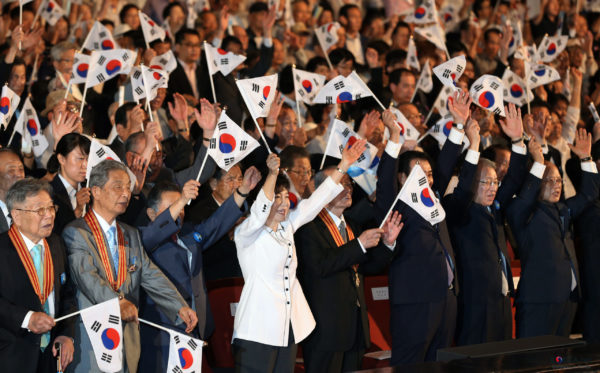
9. Liberation Day (광복절 – Gwangbokjeol)
Liberation Day (August 15th) is one of the Korean holidays to commemorate the liberation from Japanese rule. However, this holiday also celebrates the formation of Korea’s government. They also remember when the country’s first president, Syngman Rhee, ascended to power. Citizens of Korea hand flags, and participate in parades.
10. Chuseok (추석 – Chuseok)
On the 15th day of the 8th Lunar month, Koreans celebrate a traditional holiday known as Chuseok (추석, Autumn Eve). People give thanks for the harvest and celebrate Korea’s history as an agricultural country on the Autumn equinox. Koreans often travel to their ancestral homes for this holiday to trim the plants around their ancestral shrines before offering up food, crops, and drinks to their ancestors. There’s also a feast of traditional delicacies and plenty of rice wine.
11. National Foundation Day (개천절 – Gaecheonjeol)
This October 3rd holiday celebrates the establishment of the 1st Korean State. This day is solely dedicated to celebrating the formation of the first Korean kingdom of Gojoseon in 2333 B.C. Phenomenal firework displays usually take place in Seoul, with the most spectacular one being at the Yeuido Han River Park.
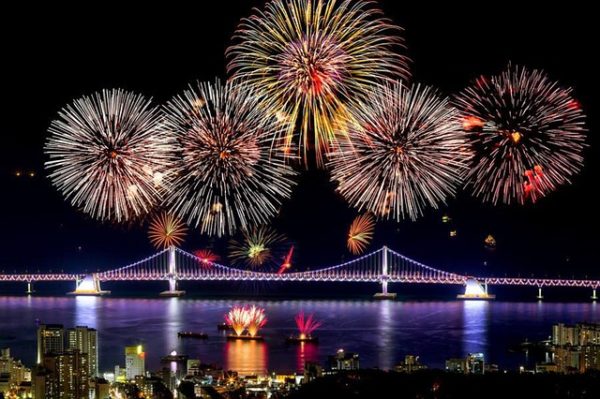
12. Hangul Day (한글날 – Hangeulnal)
On 9th October every year, Koreans celebrate the Hangul Day. Hangul is the native Korean alphabet created by King Sejong the Great way back in 1443. During Japanese rule, the use of the language was illegal. However, Koreans continued to learn and use it.
After gaining independence, this alphabet became a mark of national pride (which is why there is a day dedicated to celebrating it). On Hangul Day, people typically learn the language or visit museums where they can learn more about it. If you can’t already read Hangul, it’s vital that you sit down and learn the Korean alphabet. It’s the first step to achieving Korean fluency, and it’s really easy. You can also learn Hangul in less than an hour!
13. Christmas Day (크리스마스 – Gidoktansinil)
Nearly 30% of South Korea’s population is Christian. So, it should be no surprise that Koreans celebrate Christmas. Usually, people will have the day off of work to mark the birth of Christ. Decorations and festive meals are a hallmark of the holiday, as well as going to church for service.
While in Western culture is only for family, Christmas is a special day for Korean couples. It’s seen as another Valentine’s Day. As a result, a lot of restaurants and hotels in Korea get particularly busy promoting special package deals for couples during the Christmas season.
How to Get More Enjoyment Out of Korean Holidays
Korean holidays are a great time for celebrations, getting together with family, and eating excellent food. If you want to experience these joyous occasions, you can only do it if you speak Korean. Luckily, you can reach Korean fluency fast with OptiLingo.
This language learning app brings you results. OptiLingo combines the best language learning methods to bring language learners to fluency faster. You’ll learn how everyday Koreans speak, so you’ll be able to speak like a local yourself. Download OptiLingo today, and discover how effective learning Korean can be!

